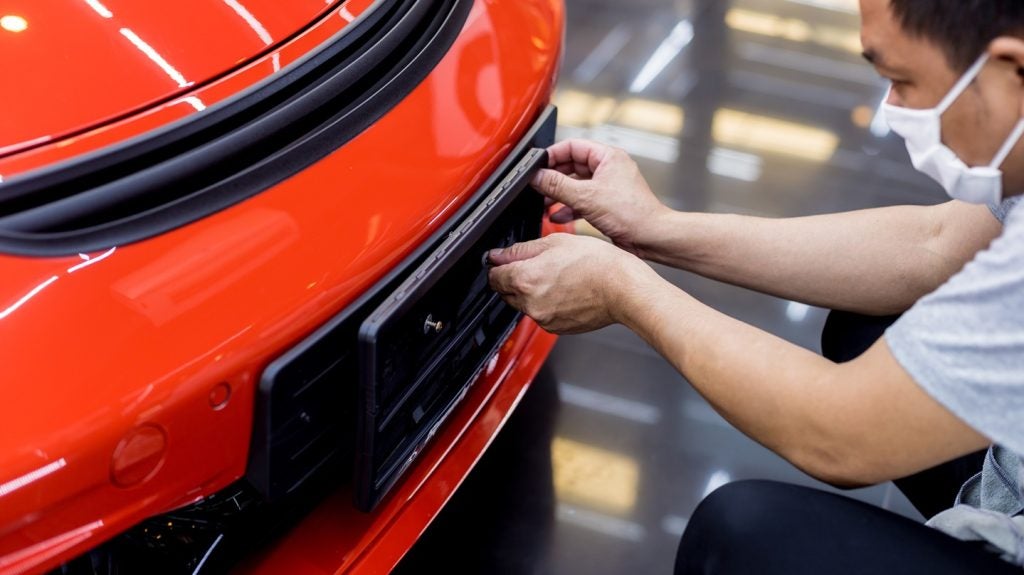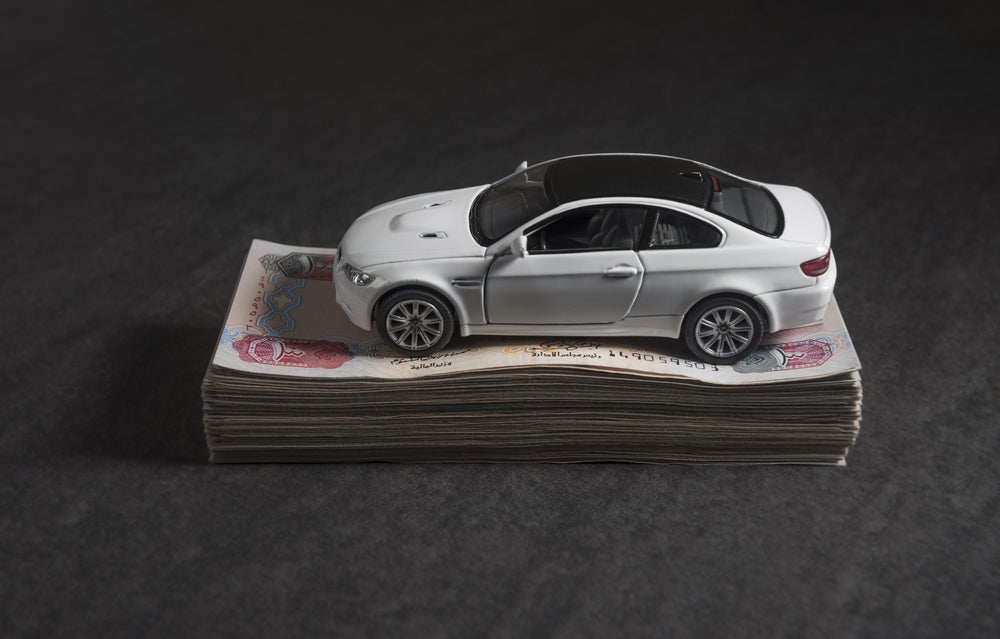The European motor
manufacturers face tough challenges, with overcapacity and
plummeting sales not the least of them. But how closely are the
fortunes of their finance units tied to those of their manufacturer
parents? Jo Tacon
reports.
It is hard to
deny that the motor manufacturing industry has been harder-hit than
other sectors by the current recession, with a fairly uniform
gloomy outlook for most of Europe. Scrappage schemes in various
countries have brought temporary relief, but observers worry that
the motor industry is storing up problems for the future – and
heading towards a giant hangover (see The end id
nigh).
According to a recent report on European OEMs, by
consultancy firm AlixPartners, manufacturers will make an average
loss of €1,800 (£1,625) on every vehicle sold this year, thanks in
the main to production overcapacity.
Michael Weyrich, managing director at the firm,
comments: “If in 2007 we had a new registration market in Western
Europe that was just shy of 17 million vehicles, our research shows
that it could take at least until 2014 before we see a similar
level of demand again. As a result overcapacity must be taken into
account; industry capacity has to reduce significantly to make the
industry viable again.”
Capacity utilisation levels in the global
automotive industry have gone from approximately 83 percent in 2007
to 64 percent in 2009, Weyrich adds.
“So when an OEM’s manufacturing capacity is only a
little more than half-utilised, then of course implications on
profitability are significant. Per vehicle, revenue is declining
against a stable cost base,” he says.
How well do you really know your competitors?
Access the most comprehensive Company Profiles on the market, powered by GlobalData. Save hours of research. Gain competitive edge.

Thank you!
Your download email will arrive shortly
Not ready to buy yet? Download a free sample
We are confident about the unique quality of our Company Profiles. However, we want you to make the most beneficial decision for your business, so we offer a free sample that you can download by submitting the below form
By GlobalDataRatings agencies are also casting a weather eye
over the carmakers, with unease over the viability of the sector.
Emmanuel Bulle, a senior director in Fitch Ratings’ European
Corporates group, says the agency remains “a bit negative on OEMs’
prospects in the medium-term” – and that pessimism has grown over
the industry’s ability to recover in the near future.
“We all saw 2009 as a difficult period, and thought
that the outlook would start to improve in 2010, but we are seeing
that scrappage schemes are distorting the picture and so in 2010 we
are not expecting a rebound. The same negative factors – such as
weak sales and prospects – will still characterise the general
environment,” Bulle says.
Intensifying the highs, deepening the
lows
But what role has motor finance played in
the challenges currently facing the industry? Weyrich observes that
the abundance of “extremely attractive” finance offers available to
consumers helped to keep demand for new cars high.
“Industry analysis from AlixPartners
suggests that had it not been for the availability of attractive
finance and leasing packages in the early 2000s, there would have
been a decline in market demand. The financing availability created
an artificial ‘over-demand’, which is now worsening the current
situation,” he says.
Now, with manufacturers’ captives (along with other
finance providers) having “limited the financing and leasing
options available”, and with their the cost of funding having
risen, says Weyrich, the effect on sales has been devastating,
with, he points out, new car registrations down by 15 percent to 20
percent across Western Europe. Of course, not all – or even most –
of the decline can be traced back to scarcer credit, but it has
certainly played a part in limiting consumers’ purchasing
power.
But how closely tied to their parents’ fortunes are
the captive finance houses?
Bulle says: “Captives are intimately linked to the
fortunes of the OEMs – they can’t sell finance if no cars are sold.
They are not getting enough cars to finance, but at the same time
from a financial services point of view, they are in somewhat
better shape as their penetration rate increases.
“In the difficult environment of the banking crisis
we saw that many banks were reluctant to provide financing to
retail customers. In a situation where manufacturers are seeing
sales slump by 15 percent to 20 percent, but captives are stable or
down only slightly, it’s not the same horrific picture we are
seeing for manufacturing operations.”
Pierre Gautier, a credit analyst at Standard &
Poor’s (S&P), broadly concurs: “In our view, the financial
profiles of most rated captives have remained relatively resilient
since the beginning of the crisis. More specifically, rated
captives have, in many cases, demonstrated stronger resilience than
corporate parents, whose business models are very
volume-sensitive.
“However, the captives are not immune to the poor
auto market and difficult refinancing environment. This is the
reason why we have negative outlooks on the majority of the
captives’ final ratings and some have suffered downgrades over the
past months,” he adds.
Gautier says that S&P’s negative outlooks are
based on analysts’ concerns over pressure on profitability, “as we
expect funding costs to remain elevated and credit risk losses
(retail and dealers) to rise in a recessionary context.” And if the
motor sector’s woes continue for longer than predicted, “captives
[will] no longer be in position to offset lower volumes by higher
margins as they did in 2008 and the first half of 2009,” he
warns.
Liquidity is, he adds, another area of concern,
which is holding down credit ratings: “In our view term-funds will
be scarcer and more expensive going forward. Any further
deterioration of parent’s franchise in market participants’ minds
could impair as well the captive’s own access to capital
markets.”
Bulle, too, emphasises the key role played by
funding issues in intensifying the problems faced by both OEMs and
captives.
“The overall activities of a manufacturer require
two kinds of finance, one for capex/operations and so on, and one
for financial services refinancing, which was most at risk
recently. Industrial investment can be delayed by a month or two
but the financial services part is much more liquid and has
unavoidable short-term needs,” he points out. “In the recent
difficult period the carmakers experienced it was the amount of
rolling debt from financial services which required support. State
action was clearly very welcome.”
Scrappage: The impact
While governments across Western Europe
have helped carmakers’ liquidity through such measures as
guaranteeing loan issuances and injecting funding, by far the most
visible gestures of state support, for consumers at least, have
come through scrappage schemes. JATO Dynamics, an automotive data
provider, reports that August new car registrations in the ‘big
five’ European markets (France, Germany, Italy, Spain, UK) all sold
more cars in August 2009 than in the same month last year (see
table).
It is striking that the top eight places in the
table are filled by OEMs with a strong focus on smaller cars, while
the larger model-focused Audi and BMW, at 9th and 10th place, were
the only manufacturers to see volumes in August 2009 decline
compared with August 2008.
Maria Bissinger, a credit analyst at Standard &
Poor’s, says that government support schemes have proved to be of
more benefit to volume makers than to premium manufacturers.
“For example, Volkswagen is reported to have
secured the largest proportion of Germany’s scrapping incentives,”
she notes.
But, like many other industry observers, she warns
of coming pain once schemes expire: “Historically, however,
automotive demand has suffered from a certain ‘payback effect’
after expiry of incentive schemes.”
And, Bissinger adds, extension of schemes may not
be enough to ward off the sales ‘hangover’: “We understand that
several European countries are currently considering a continuation
of their incentive schemes beyond 2009; still, historical evidence
suggests that the extension of sales incentives does not have a
comparable effect to that in the initial phase.
“The French and Italian automakers, in addition to
Germany’s Volkswagen, have been among the beneficiaries of European
scrapping incentive programs, which, in our view, will have a
payback effect in 2010, resulting in the postponement to 2011 of
the rebound in demand we had initially expected next year.”
In her colleague Gautier’s view, scrappage has had
a more muted impact on captives.
“We do not consider that the relatively resilient
results posted by car finance units in the first half of 2009 were
driven by the scrappage schemes, but much more by an increased
focus on maintaining or increasing margins on new production and on
containing the rise in credit risk losses as much as possible,” he
says.
“However, we recognise that these measures have
probably somewhat prevented a higher than observed decline in new
financings.”
Liquidity
Looking forward, there is obviously still
much of concern to motor manufacturers and their captive units. The
structural challenges facing the industry – such as overcapacity,
and a consumer move to smaller cars with their smaller profit
margins – are unlikely to be solved easily. And with governments
across Europe desperate to prop up their domestic carmakers, to
avoid politically damaging mass job losses, the question of
oversupply in particular is not likely to go away any time
soon.
Captive finance units, too, face long-term
challenges – not least that of securing adequate liquidity to fund
lending operations, with many traditional funding routes, such as
auto loan securitisations, currently cut off, or very hard to
access.
Bulle comments: “What we have seen so far and what
will continue is that securitisation is not going to classic normal
investors. To institutional investors, auto loan securitisations
are all but invisible, with no investor very likely to go to this
market in the short term.” Instead, he says, the European Central
Bank (ECB) is buying up securities: “[The ECB] is taking deals as a
repository, a kind of guarantee, which is a necessary action to
keep automakers liquid.”
Customer over-indebtedness is also a concern,
Weyrich says, adding that “the big question is, as the recession
continues and there is more and more of a squeeze on the economy,
and therefore on the ability of consumers to keep up debt
repayments, when will defaults start to impact this debt?
“This is very likely the next wave that will hit us
and which will have a spill over effect on OEMs’ financing arms and
on the banks and independents that provide finance in this market,”
he predicts. It seems the motor industry is not out of the woods
yet, and will not be for some time to come.”
New car registrations in the ‘big
five’
|
Aug 09 |
Aug 08 |
% change |
Year to Aug 09 |
Year to Aug 08 |
% change |
|
|
Volkswagen |
104,589 |
91,031 |
14.9 |
1,086,496 |
1,063,897 |
2.1 |
|
Ford |
62,762 |
59,850 |
4.9 |
835,198 |
845,257 |
-1.2 |
|
Opel/Vauxhall |
56,894 |
54,590 |
4.2 |
709,796 |
812,088 |
-12.6 |
|
Renault |
56,661 |
56,006 |
1.2 |
672,632 |
782,520 |
-14.0 |
|
Peugeot |
55,769 |
47,032 |
18.6 |
651,450 |
715,493 |
-9.0 |
|
Fiat |
48,983 |
43,640 |
12.2 |
681,426 |
672,849 |
1.3 |
|
Citroën |
48,522 |
43,681 |
11.1 |
569,126 |
606,808 |
-6.2 |
|
Toyota |
45,176 |
42,743 |
5.7 |
468,579 |
535,461 |
-12.5 |
|
Audi |
36,965 |
41,917 |
-11.8 |
421,025 |
442,508 |
-4.9 |
|
BMW |
33,217 |
34,506 |
-3.7 |
370,647 |
468,374 |
-20.9 |
|
Source: JATO Dynamics |
||||||
Q&A: Pierre Gautier, credit analyst, Standard &
Poor’s
Q: Issuance of securities by
captives has slowed, if not completely ground to a halt. What
effect has this had on liquidity for auto finance arms? When will
we see securitisation of motor loans return to its previous levels,
if ever?
PG: Medium-term bond issuances slowed
significantly between the fourth quarter of 2008 and the first
quarter of 2009, for the captives as for the whole banking
industry.
The quasi-impossibility of raising medium-term
money on capital markets was compensated for by increasing recourse
to securitisation (collateral bought by the European Central Bank
(ECP) for repo [for example, repurchase agreement] refinancing as
there was very limited appetite from private investors), to
guaranteed issues from the local credit guarantee schemes, to
shorter forms of debt (collateralised debt and commercial paper),
and bilateral banking lines provided by captives’ core banks.
The captives that we rate generally have prudent
liquidity management and ample resources immediately available to
buffer temporary inability to raise money on term capital markets.
This explains why their liquidity position has remained relatively
stable so far.
Q: What difference has
government support for manufacturers and captives had on ratings
for carmakers and finance arms? Is government support enough to
secure a stable long-term rating, or does S&P see such measures
as strictly temporary?
PG: Most of the car finance captives we
rate in Europe are banks, and this fully regulated status is an
important element in our rating approach.
More specifically, some of these entities have
benefited from the credit guarantee scheme implemented in many
European countries to support the banking system. Irrespective of
the dedicated mechanisms that have been created since the beginning
of the crisis, and that we view as finite, being a bank means
having an ongoing access to ECB refinancing, which will continue to
be significant and sustainable funding resource in the future.







